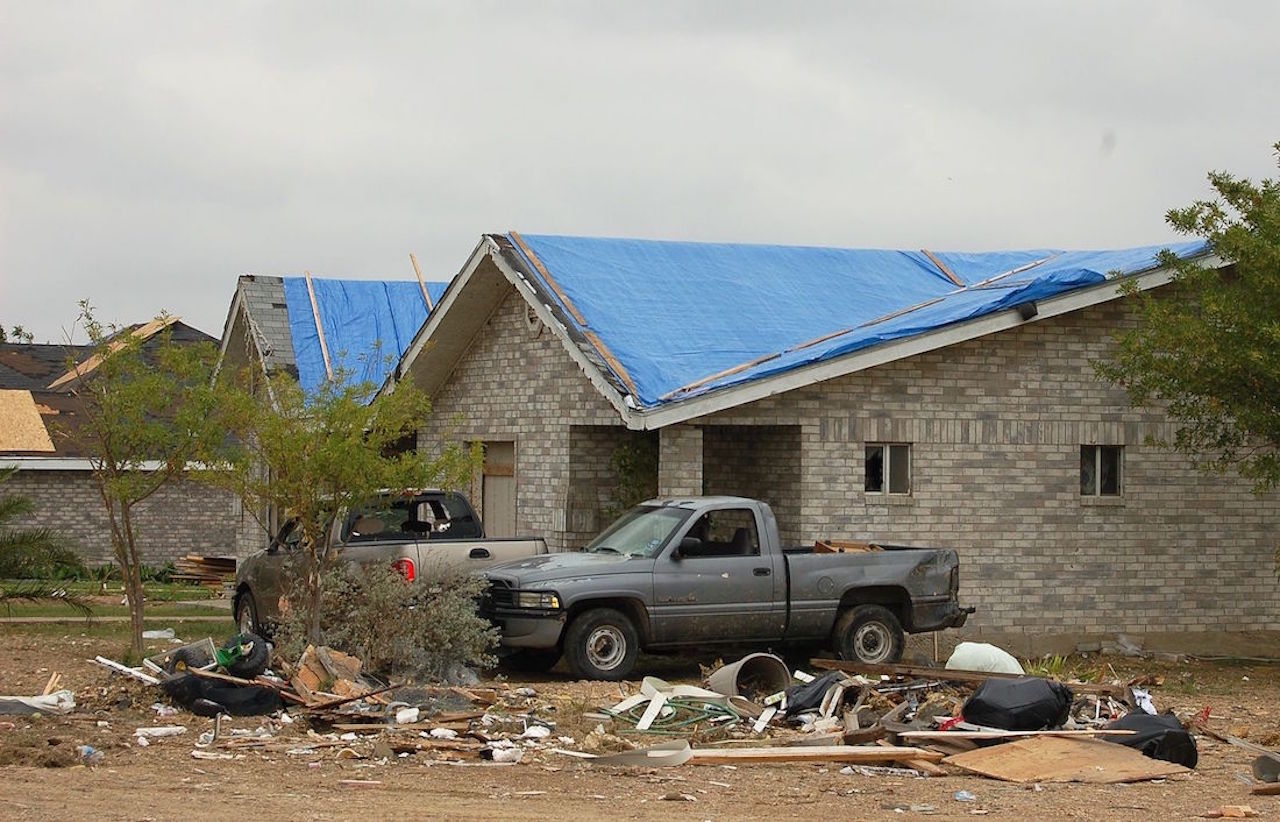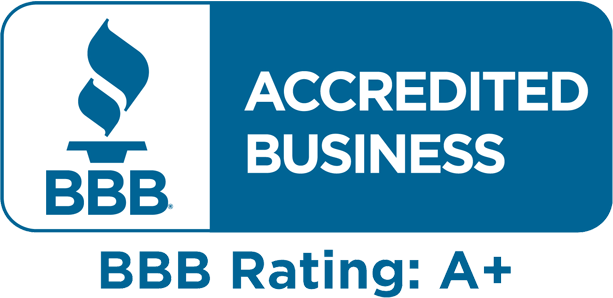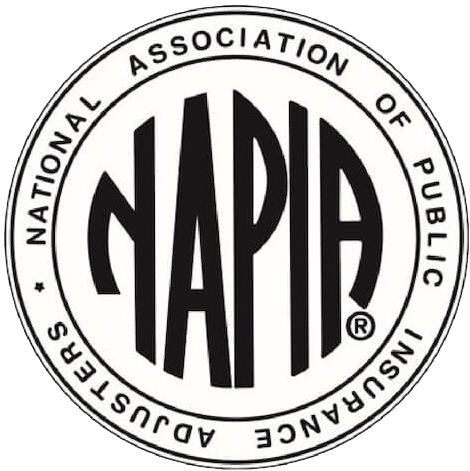Everything You Need To Know About Tornado Damage Insurance Claims
Tornadoes can cause extensive damage to your home.
When a tornado strikes, you expect your insurance to cover you.
Most homeowners insurance policies cover tornado damage via dwelling coverage, which helps to repair or rebuild your home after tornado damage (or damage from any windstorm).

However, some homeowners insurance policies do not cover windstorm damage. If you live in a wind-prone area of the country, for example, then your policy may exclude windstorm damage. You may need to pay extra for it.
Today, we’re explaining everything you need to know about tornado damage insurance claims and how they work.
How Homeowners Insurance Policies Cover Tornado Damage
You buy homeowners insurance to protect your home and your possessions. After a tornado, your home and the contents inside your home may be damaged. That’s why you make a homeowners insurance claim.
Most homeowners insurance policies include dwelling coverage. Dwelling coverage covers the cost of repairing or rebuilding your home after unexpected events – like a house fire, windstorm, or tornado.
Most homeowners insurance policies also include personal property coverage, which covers the cost of replacing or repairing the belongings inside your home after a loss.
Here’s how these coverages work for most tornado damage insurance claims:
Dwelling Coverage: Dwelling coverage covers the cost of repairing or rebuilding your home from tornado and windstorm damage.
Personal Property Coverage: Personal property coverage covers the cost of repairing or replacing damaged or destroyed belongings inside your home. If a tornado destroyed your computer, for example, then you could make a personal property coverage claim for the value of your computer.
You should be able to make a claim for your tornado damage to cover your dwelling and personal property. However, check if your policy excludes windstorm or tornado damage before proceeding with your claim.
Some Homeowners Insurance Policies Exclude Wind Damage
Most homeowners will be able to make a claim for tornado damage through their policy. However, if your policy excludes windstorm coverage, then you will not be able make a claim for tornado damage.
Your insurance policy may exclude windstorm or tornado coverage if you live in a wind-prone area of the country.
In this situation, your standard insurance policy may exclude windstorm damage but many homeowners pay extra for windstorm coverage.
As a general rule, most homeowners insurance policies in the United States cover tornado damage through windstorm coverage. However, check your policy to make sure you’re protected against tornado damage.
How Insurance Companies Cover Windstorm Damage
If your insurance policy covers windstorm damage, then you can proceed with a claim.
Insurance companies compensate your windstorm damage in two different ways.
Depending on your policy, insurance companies will cover the actual cash value or replacement cost of your dwelling and property up to the limits of your policy.
Actual Cash Value (ACV): With actual cash value home insurance, your insurance company pays you the actual value of the contents of your home, minus depreciation of these contents over time. If you paid $1,500 for your laptop five years ago, for example, then you might receive just $400 in compensation today because of depreciation.
Replacement Cost Coverage: If you have a replacement cost coverage policy, then your insurer will pay to replace the damaged item with one of similar type and quality. If your $1,500 laptop was damaged in the tornado, for example, then your insurer will cover the cost of replacing that laptop with one with similar specifications.
When shopping for homeowners insurance, you choose which insurance policy you like. Replacement cost coverage policies cost more than ACV policies, but they also provide significantly more compensation after a loss.
Both ACV and replacement cost policies cover tornado damage up to the limits of your policy. If your home was a total loss from the tornado, for example, and you have a homeowners insurance policy with a $100,000 limit, then your insurer will pay you $100,000.
Tornado Damage Accompanied by Water Damage
Tornados may be accompanied by a heavy rainstorm. Many homeowners insurance disputes arise because of confusion about the source of the damage.
Homeowners insurance policies do not typically cover flood damage. If your home damage was caused by a flood, then your insurance company may deny your claim.
Homeowners insurance policies generally do cover windstorm damage. If your home damage was caused by the winds of the tornado, and as a result of that damage water got inside your home, then your insurance company should pay for damages, as long as your policy covers windstorm damage.
As you can imagine, claims can get messy.
What happens if a tornado damages your home, but then floodwaters from the street pour into your home through that damaged area? What happens when stormwater systems back up into your home? What happens when a tornado causes a tree to fall onto your home, allowing rain to enter your property?
In all of these situations, claims can get messy quickly. That’s why it’s important to document damages and stay detailed and organized through the entire claim process – or hire a licensed Public Adjuster for large claims or difficult situations.
If you live in a flood-prone region, you may be able to buy flood insurance through the National Flood Insurance Program. The NFIP provides flood insurance to flood-prone areas of the country where traditional insurance companies do not want to provide it.
Tornado Damage Caused by Fallen Trees
Trees may fall on your home during a tornado. If a large tree falls, it could cause serious damage to your home, your car, and other property in and around your home.
Your insurer may or may not pay for fallen tree damage, depending on your policy coverage options.
If wind caused a tree to fall onto your home, and your homeowners insurance policy covers wind damage, then your insurance company should pay for repairs. The wind caused the tree to fall over, damaging your home.
However, your insurance company may argue that it was a maintenance-related issue: the tree fell on your home because you didn’t remove the rotting, leaning, or damaged tree, for example. In this situation, the insurer may deny your claim because you failed to take adequate precautions. As a homeowner, you have a responsibility to maintain your home.
How to Evaluate Tornado Damage
If a tornado struck your area, then you might have serious or minor damage. You need to evaluate your home to determine the extent of the damage caused by a tornado.
- Start with a visual inspection of the home. Check your roof, windows, and siding.
- Look for missing shingles or flashing, damage to the gutters, and siding pieces that have been broken or split.
- If you have wood shingles, then look for cracked, dented, or split wood shingles. With asphalt or composition shingles, look for divots, cracks, or visible signs of damage to the shingles (like areas that are soft to the touch or appear damaged).
- The soft metals of your roof may have damage. Check the flashing, vents, chimney, air conditioning units, exhaust caps, and other soft metal components of your roof for any dents or physical damage.
- Finally, check your window frames and gutters for physical damage.
Even if shingles don’t look damaged, they might have significant damage after a tornado because of granule loss. Hail and wind-flung debris can cause significant damage to the granules of your shingles. Once your shingles lose their granules, they become less effective. They don’t wick moisture as efficiently, and this can cause moisture to build up underneath.
For all of these reasons, it’s important to order a professional roof inspection after a tornado or significant windstorm. If you need help with inspecting damage, dealing with the insurance company or handling a tornado damage insurance claim contact a licensed Public Insurance Adjuster for a free consultation.
Tornado Damage & Storm Intensity
Tornados are graded from F0 to F5. Depending on the category of tornado, you might have minor to severe damage.
The Fujita (EF) scale rates tornadoes from F0 (light damage) to F5 (very heavy damage). At the highest end of the scale, tornados have windspeeds of 261 to 318mph.
Some of the most destructive tornadoes in the United States, including the Tuscaloosa and Joplin tornadoes, were considered F4 and F5 tornadoes. However, even F3 tornadoes can destroy homes and cause serious damage.
Here are tornado severity scales and the typical damage they cause:
- F0: Light damage to chimneys, sign boards, and siding.
- F1: Roof surfaces peeled away and mobile homes overturned.
- F2: Roofs torn off buildings, mobile homes destroyed.
- F3: Roofs and walls torn away from buildings.
- F4: Buildings destroyed with some structures blown a long way away.
- F5: Homes destroyed and swept away.
Tornado Losses Are Increasing
Tornado losses are becoming more common. Nearly half of all catastrophic losses per year occur due to severe thunderstorms and tornadoes.
As populations increase in rural areas of the country, the number of tornado losses will continue to rise. More homes are being built in rural areas along the path of tornadoes, which increases the likelihood of a tornado hitting a home.
According to Aon, insured losses in the United States from severe convective storms (the types of storms that cause tornadoes) has totaled at least $10 billion each year since 2008. Although scientists aren’t clear if the number of storms is increasing, it’s clear that the number of insurance claims is increasing.
And, as the Insurance Information Institute explains, the United States experiences more tornadoes than any other country.
Two of the costliest tornadoes in American history have included the April 2011 tornado in Tuscaloosa, Alabama (which caused $8.5 billion in damages) and the August 10, 2020 Midwest Derecho (which caused $8.3 billion in insured losses).
Plus, tornadoes can happen at any time of year. Although they’re generally associated with summer thunderstorms, tornadoes can occur during any month, especially if you live further south.
How a Tornado Damage Insurance Claim Works: Step by Step Guide
Most homeowners have zero experience with tornado damage insurance claims. Unfortunately, your insurer may try to take advantage of that fact, pushing you to accept lower compensation than the amount you are owed.
Here’s how a typical tornado damage insurance claim will proceed:
- You experience the loss, notice the damage, and contact your insurance company.
- Your insurance company sends an adjuster to look at your property. You can be present during the inspection, but you don’t have to be. The adjuster will inspect the exterior of your home, including the roof, for visible signs of damage.
- The insurance adjuster may perform a 10’ x 10’ test on your roof to determine if there’s sufficient damage to warrant a claim. If there’s more than a certain number of dents, bruises, or breaks in the test square, then your insurance company should pay for the damage.
- The insurance company might recommend a specific contractor. Or, you can shop around for your own contractor.
- The contractor completes the repairs, repairing your roof and home to pre-loss condition.
Your insurer may pay you before or after the contractor performs repairs. Typically, the insurer sends you a check for the actual cash value of the property within a week of the inspection. The insurer may also send a second check after the repairs are completed.
In a perfect world, your contractor repairs all tornado damage perfectly, restoring your home to the state it was before the loss. You’re happy with the repairs, and you receive fair compensation from your insurance company.
In reality, unfortunately, many homeowners are dissatisfied with tornado damage insurance claims. Insurers may deny claims and contractors could perform low-quality repairs, for example, leaving you frustrated.
How a Commercial Tornado Damage Insurance Claim Works
If you have commercial property insurance, then you may need to make a commercial tornado damage insurance claim.
Commercial insurance covers many of the same things as homeowners insurance, including damage to your property and possessions.
However, commercial insurance may also cover business interruption and other issues.
If your business was struck by a tornado, then your commercial insurance should cover the cost of restoring your business to pre-loss condition.
Common commercial tornado damage insurance claim issues include:
- Broken machinery and equipment
- Damaged inventory and stock
- Fallen trees, destroyed roofing systems, and exposed roof structure components
- Partial or full structural damage to the building
- Interruption of business
Some businesses hire commercial claims public adjusters to identify all issues and ensure you receive adequate coverage for your business. A good commercial claims public adjuster can ensure your business receives every penny owed based on the terms of your insurance contract.
Tornado Damage Insurance Claim Disputes: What Should You Do?
If you and your insurer disagree about your tornado damage insurance claim, then you might need to take action.
Tornado damage insurance claims can be messy. Your insurance company signed a contract with you. It’s important to stand up for your rights – and hold your insurer accountable for your insurance contract.
Here are some of the strategies for dealing with tornado damage insurance claim disputes:
Hire an Attorney or Public Adjuster: Depending on your state, a licensed Public Adjuster or attorney could help you with insurance claim disputes. Public Adjusters fight for higher compensation on your behalf, clarifying policy language to ensure you get the maximum amount owed to you according to your insurance contract. If you have an insurance dispute worth more than $10,000, then it may be in your best interest to hire an attorney or public adjuster. Public Adjusters provide free consultations and can often resolve disputes quicker and more economically than attorney’s.
Get Multiple Estimates: Insurance companies will pay ‘fair market price’ to repair your home after a tornado. The insurer may use a defined price list to determine the cost of repairs. The actual cost of repairs could be much higher or lower. Get multiple estimates to ensure the insurer is paying a fair market price for your repairs.
Challenge your Insurer’s Claims: If your insurer claims the tornado damage came from floodwaters instead of rainwater, then it could change your claim significantly. If you know the damage came from tornado damage (which would be covered) and not flood damage (which would not be covered), then challenge your insurer’s claims. Hire a professional to assess the damage. Hire a Public Adjuster to help if needed.
Fight Against a Denied or Reduced Claim: If an insurance company has denied your claim or reduced your payout, then it’s not the end. Fight back against the claim. You signed a contract with your insurance company, and your insurance company legally needs to abide by the terms of that insurance contract.
FAQs About Tornado Damage Insurance Claims
We get plenty of questions about tornado damage insurance claims. Here are our answers.
Q: Does my homeowners insurance cover tornado damage?
A: Most homeowners insurance policies cover tornado damage. Unlike earthquakes or floods, tornadoes are covered perils that do not require special coverage. However, if you live in a wind-prone area of the country, then your policy may exclude windstorm coverage (or you may need to pay extra for windstorm coverage).
Q: How does tornado insurance coverage work?
A: Your homeowners insurance policy covers tornado damage just like it covers windstorm damage. From an insurance standpoint, there’s no difference between a windstorm and a tornado.
Q: Does car insurance cover tornado damage?
A: If your vehicle has comprehensive coverage, then car insurance protects your vehicle from tornado damage (and other windstorm damage). Comprehensive coverage is a normal part of any vehicle’s full coverage car insurance.
Q: What should I do with a tornado insurance claim dispute?
A: If you and your insurer disagree about your tornado damage insurance claim, then consider hiring an attorney or public adjuster to handle your claim. Public adjusters can double or even triple your insurance company’s initial offer for tornado damage insurance coverage.
Q: Will insurance rates rise after a tornado?
A: Insurance companies usually will not directly raise premiums on most policyholders after a catastrophic loss. However, studies show that insurance rates increase by 8% following a total loss insurance claim. In addition, insurance companies often raise rates by zip codes or other geographical areas following storms with a high volume of claims in those areas.
Q: Which states have the most tornadoes?
A: The top ten states with the most tornadoes include Texas, Kansas, Oklahoma, Florida, Nebraska, Illinois, Iowa, Alabama, Mississippi, and Colorado.
Q: Where do tornadoes occur?
A: Tornadoes can occur anywhere in the United States, and the United States experiences more tornadoes than any other country in the world. However, according to the National Weather Service, tornadoes are most common in the central plains of the Rocky Mountains and west of the Appalachians.
Q: When do tornadoes occur?
A: According to the National Weather Service, tornadoes typically occur in the late afternoon and evening during the spring and summer. The southern states experience tornadoes more often in spring, while the northern states in the tornado zone experience more tornadoes in the summer.
Q: What type of damage can tornadoes do?
A: Tornadoes can cause mild to severe damage, depending on the intensity of the storm. A severe tornado (F3, F4, and F5) can rip the walls and roof away from a home. Even a minor or moderate tornado (F0, F1, or F2) can cause serious damage to roofs, homes, and mobile homes.
Final Word: Hire a Public Adjuster for your Tornado Damage Insurance Claim
Tornado damage insurance claims can be messy. Consider hiring a Public Adjuster to help with your insurance claim.
A good public adjuster fights for higher compensation for clients, to help them make all the needed repairs and fully recover after a loss.
Contact a ClaimsMate Public Adjuster today to discuss your situation and get help with your insurance claim. A good Public Adjuster can navigate a tricky tornado damage insurance claim to ensure you receive every penny owed to you based on the terms of your insurance contract.






